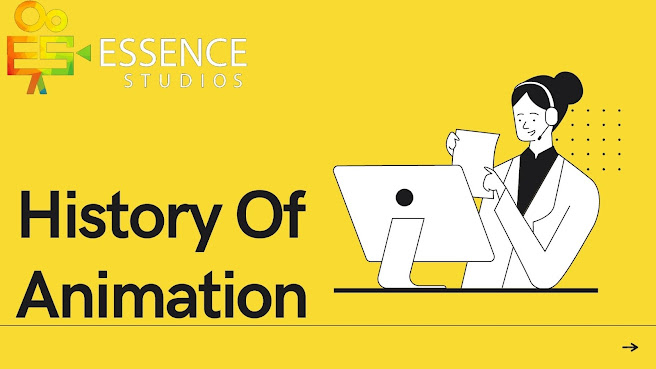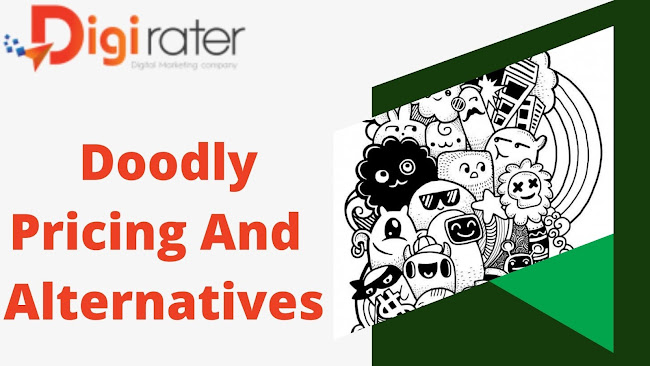Different types of animation : The history of animation
The 4 Types of Animation - A Beginner's Guide
What Is This Guide About?
The goal for this manual is to help you navigate the complexities of becoming animator.
This guide does not focus on understanding how to draw however, it is a guide to break down the different kinds (or types) of 2d animation that are available to you, as well as the tools you'll require to get started animating. The best software, the top schools, and much more.
Styles covered:
- Traditional animation
- 2D Vectorobased animation
- 3D computer animation
- Motion graphics
- Stop motion
I hope this article will inspire you to take that first step toward following your dream of creating animation.
There's no need to make excuses. Everything you have to be aware of you can find right here.
Traditional Animator (2D, Cel, Hand Drawn)
Traditional animation, also called cel animation is among the oldest kinds of animation. In the animator draw each frame in order to create the sequence of animation. Much like they draw in the past of Disney. If you've had one of those flip books when you were a child, you'll be able to understand. The rapid screening of sequential drawings each time give the illusion of motion.
"There's always a space for hand-drawn images. Personally, I like the imperfections of hand-drawn images rather than the sleek style created by computer animation."Matt Groening
About Traditional Animation
Traditional animation is where animators create images on a translucent piece of paper that is attached to pegs using colored pencils, drawing each frame at a time. Animators usually testing animations using very rough characters to determine the number of frames they have to draw in order for the motion to be properly seen. Timing is crucial in traditional animation since frames must be able to match the music precisely so the process of animation in traditional animation may be long and expensive. After the cleaning and interspersing is completed then the production will move onto photographing each frame.
History
The history of animation could be traced back as long as 5.000BC in the event that you are open to the techniques in the form of art. depicted on a bowl of pottery in Iran that shows the leaping of a goat.
Animation techniques we are familiar with However, they first came into existence in 1650, as The Magic Lantern, by the Venetian inventor Giovanni Fontana. The question of whether or not he is the creator is controversial. A simple lantern that had an animation strip that slid across a lens that was lit by just one candle, was humanity's first exposure to projection. This was mostly used to scare people with pictures of demons hanging from the walls, and also to play on the beliefs of people.
Numerous other inventions were invented like The Phenakistoscope and Zoetrope but the first time animation was projected on a screen was made in 1877, thanks to the Praxinoscope which was invented by French scientist Charles-Emile Reynaud. He later developed the Theatre Optique in 1888, which was used by him to present the first public display in animation held at Musee Grevin in Paris in 1892.
He also screened his animated film Pauvre Pierrot, which is famous for being the first time that film perforations were employed, as well as for having animated characters drawn direct onto the frames rather than being photographing them.
The first film made on a filmstrip was created in 1900. It also contained animated sequences, in which J. Stuart Blackton draws the image of a man in an aisle with a bottle of wine. The man is seen grabbing the bottle. Blackton then followed with his Humoureous Phases of Funny Faces, which cemented J.Stuart Blackton as the forefather of American animation.
Moving into France around 1908 we witnessed the first ever fully animated film. It was created by French creator Emile Cohl. The film was titled Fantasmagorie that featured stick figures who encountered various inanimate objects they interacted with.
In the 1910's studio animated films were born thanks to the cartoonist from the newspaper Winsor McCay, who directed numerous animated shorts. In the decade of 1910's animations, they were called "Cartoons". They were primarily created for cinemas be used as pre-show entertainment prior to making the film. John Randolph Bray andEarl Hurd was among the most successful animated makers of the decade and was the one to patent the cel animation method that would later dominate the industry of animation throughout the course of the century.
Today, traditional animation is typically done with computers using tablets (such such as Wacom Cintiq.) It's usually animated at twelve frames per second but there are occasionally faster animations animated at 24-frames per second.
Photoshop
Photoshop is frequently overlooked when looking at animation software however its ability to draw is what makes Photoshop one of the most effective options for frame-by-frame animation that is Disney-like. Photoshop's timeline function allows animating using drawing frame by frame with onion skinning, and is extremely robust.
TVPaint
A French animation program, TVPaint is the all-in-one 2D animation program you'll require. It's more powerful than Photoshop however it is also more expensive. Ideal for studios and professionals.
Toon Boom
Toon Boom offers a user easy set of animation software with sophisticated rigging techniques, effects, cameras and effects. It's a vector-based program that means you'll be getting that flash-like look that I, personally dislike of.
They offer a variety of packages at various costs. The packages include Toon Boom Studio, Animate, Animate Pro and Harmony. If you are an amateur animator, I suggest that you purchase the Toon Boom Studio package, that isn't too costly, yet still offers an impressive set of options.
Anime Studio
Anime Studio is a complete 2D animation software that allows you to create conventional animation, cutouts as well as anime-style animation.
It comes with a complicated bone system to allow for complex rigging. It also works with it's own Unity engine.
It comes with two options that include it's Debut along with it also has the Pro (priced at $299 and $49 respectively.) The first is intended for enthusiasts as well as beginners, while the pro provides professionals with the most sophisticated tools.



Comments
Post a Comment